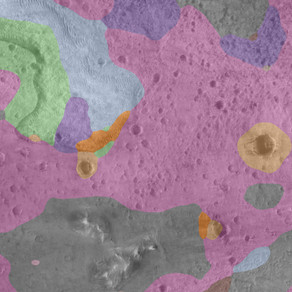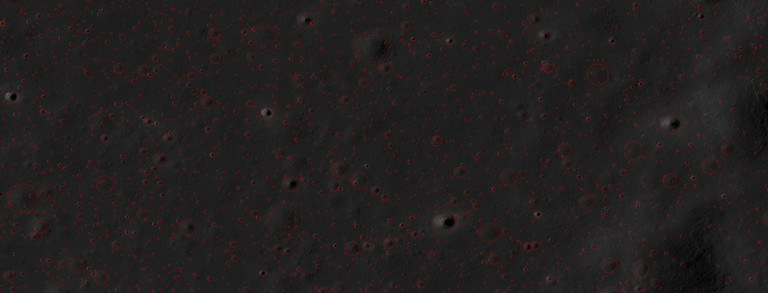Distribution and Origin of Lunar Hydroxyl
Projektlaufzeit: 01.01.2016 - 31.12.2018
Reflectance spectra of the surface of the Moon in the near-infrared wavelength range often display a spectral absorption feature at about 3 µm wavelength, which is commonly ascribed to the presence of water or hydroxyl (OH). The analysis of this spectral absorption is difficult as it is often superposed by a thermal emission component. In this project we intend to examine in detail the dependence of the spectral absorption depth related to the presence of OH inferred from Moon Mineralogy Mapper (M³) hyperspectral image data on the specific method used for correcting the M³ spectra for the thermal emission component. Based on the insights gained by this analysis, global and regional maps of the OH absorption depth will be constructed based on M³ hyperspectral image data. Regional mapping at increased resolution will focus on typical terrain types such as mare and highland surfaces on the lunar nearside and farside, but also to geologically especially relevant terrain types like central peaks, pyroclastic deposits, impact melt deposits and swirls, where possibly anomalous OH adsorption behaviour may be encountered as a consequence of peculiar surface composition and/or structure. In the context of these mapping activities, we will perform a detailed quantitative analysis of the local dynamical behaviour of the OH absorption depth in the course of the lunar day. This investigation may provide hints towards a separation between OH possibly originating from adsorbed solar wind particles and OH possibly contained deep inside lunar minerals. In this context, we will also study the interaction between the lunar exosphere and the lunar surface regarding the production or exchange of volatiles. We expect that the proposed analyses of the global and regional behaviour of the lunar OH absorption depth and especially the analysis of its variations during the lunar day will provide essential new insights into the distribution and origin of lunar OH.




